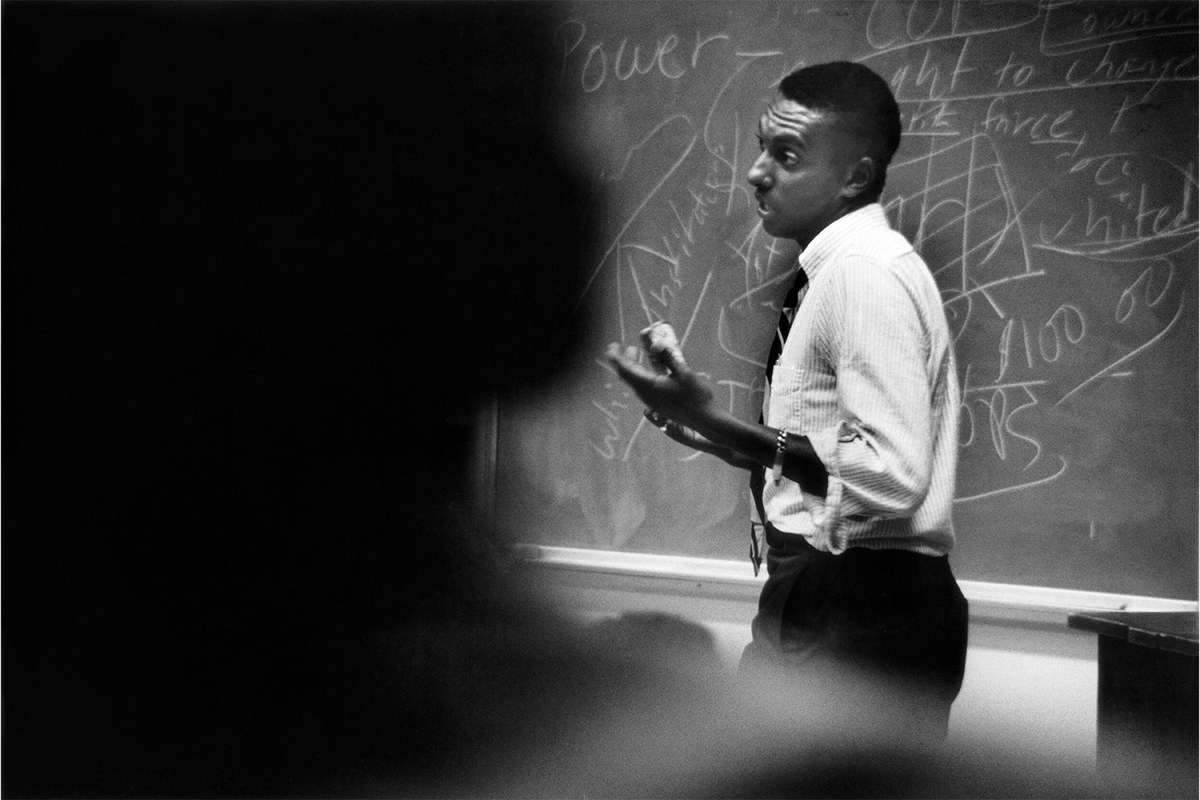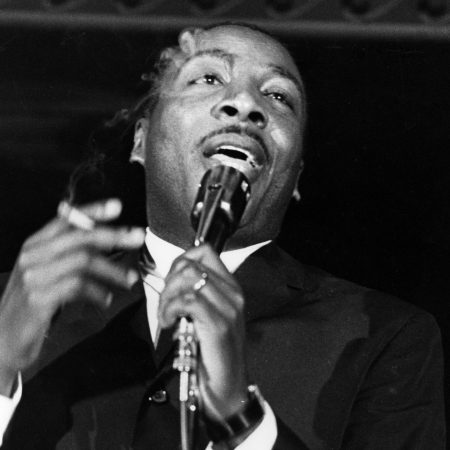The pity of the civil rights movement is that it is still ongoing. The wound of racism continues to fester. And for those who think otherwise, the history of the struggle is fading fast. When Congressman John Lewis died in 2020, it was no doubt news to some that he was one of the original Freedom Riders, chaired the Student Nonviolent Coordinating Committee and had his skull cracked marching for voter registration in 1965. It’s hard not to ponder the whims of history — who is remembered and who is not — as the the Museum of Fine Arts, Houston presents Gordon Parks: Stokely Carmichael and Black Power, an exhibition that runs through January 16.
Born poor, the youngest of 15 children, Parks was a man of many talents: writer, composer, filmmaker (Shaft) and, most notably, photographer. Carmichael, born in Trinidad and raised in New York City, was a fiercely determined activist and orator whose call for Black Power was central to the cause in the 1960s. Carmichael died at 57 in 1998, in Guinea, where he had relocated nearly 30 years earlier. There, he changed his name to Kwame Ture, an homage to Ghanian revolutionary Kwame Nkrumah, founder of the All-African People’s Revolutionary Party — of which he became an ardent supporter — and Guinea’s president Sékou Touré, who had fought for liberation from France.
Distanced from the American scene, Carmichael’s profile was bound to fade, but in his prime, he was an undisputed star. While not universally esteemed (some activists dismissed him as a lightweight, other saw him as too radical), his participation in the movement, which began when he was a student at Howard University, was unwavering. Succeeding John Lewis as the chairman of the Student Nonviolent Coordinating Committee, Carmichael began to voice a more militant philosophy. At a rally in June 1966, he declaimed, “We been saying ‘freedom’ for six years. What we are going to start saying now is ‘Black Power.’” When the May 19, 1967 issue of Life magazine landed on coffee tables across the country, his status as someone to reckon with was confirmed. In a six-page spread entitled “Whip of Black Power,” Gordon Parks offered in text and photos an up-close look at the man and the world in which he operated.
Today, it can be comical — or comically alarming — to flip through that issue, where the ads included former stripper Gypsy Rose Lee hawking Heublein Cocktails and a fashion feature focused on Nancy Reagan, “wife of her state’s controversial governor.” And it can be difficult to comprehend how much print and photojournalism shaped perceptions back in the day. When they weren’t tuning into Walter Cronkite for their news, Americans turned to Life and Time. “In the mid-1960s, Life had an estimated 48 million readers, almost 24% of the U.S. population,” notes exhibition curator Lisa Volpe. “However, that staggering readership was primarily white, and Parks was aware that he worked ‘for the great white father, Life magazine.’”
Parks, who died in 2006 at 93, contributed to Life from 1948 to 1972. As a Black man, he occupied an enviable if not always comfortable position in mainstream media. While he may have encountered pushback from his bosses any number of times, the Carmichael essay he produced is blunt and powerful. Narratively engaging, it follows its 25-year-old subject over a number of months, from an appearance in Watts, a neighborhood in Los Angeles, where he denounced the war in Vietnam, to his place in the Bronx, where he quoted Albert Camus.
Parks shot roll after roll for the project, but only a few images appeared in print. One shows Carmichael on a rocky road in Lowndes County, Alabama, where he led a voter registration drive. Another catches him seated at a desk, back to the camera and head in hands. Featuring 50 additional photographs and contact sheets that have never been published or exhibited, plus footage of Carmichael’s speeches and interviews, Gordon Parks: Stokely Carmichael and Black Power reveals the amplitude of the photographer’s project and offers fresh insight into Carmichael’s personal commitment and public persona.
When Kanye West and conservative commentator Candace Owens don “White Lives Matter” sweatshirts — a slam, of course, at Black Lives Matter — it’s easy to bemoan the commodification of social conscience (their gesture was made at Paris Fashion Week) and a culture in which talk takes precedence over action. The activism of the 1960s wasn’t without its internal power struggles and sometimes shallow media-courting strategies, and it would be a mistake to look at Stokely Carmichael and Black Power through rose-colored glasses. But look we should.
This article appeared in an InsideHook newsletter. Sign up for free to get more on travel, wellness, style, drinking, and culture.
























